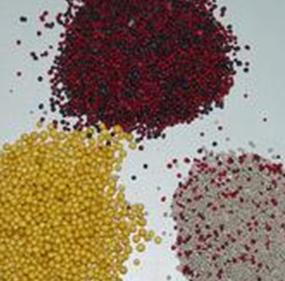
According to India’s official data, India’s total fertilizer consumption in 2013 was 47.5 million tons. The decrease in the cost of potash fertilizer and phosphate fertilizer in the international market is the main reason for the increase in the consumption of compound fertilizer in India. From January to April 2013, China's diammonium exports to India accounted for 53% of the total, with a total of 115,000 tons. The share of exports to India in January-April 2014 only accounted for 12%, and exports were 93,000 tons. The reason for this phenomenon is the high inventory of diammonium in India and the low price of urea. India imports large quantities of urea and reduces the purchase of diammonium.
Fertilizers are used to improve the productivity of nutrient-poor soils. In order to meet the food needs of India’s growing population, the consumption of chemical fertilizers has also continued to increase. The consumption of chemical fertilizers depends on the soil and climatic conditions in different regions. Urea and nitrogen-containing fertilizers are among the most popular fertilizers. However, the farmers will select compound fertilizers such as diammonium phosphate, calcium phosphate, and quinol based on the demand. For basic fertilizers such as potash and phosphate fertilizers, they mainly rely on imports. Over the past few decades, overuse of nitrogen fertilizers has increased the alkalinity of soils in northern and central India.
In recent years, although there have been changes in domestic subsidies for fertilizers in India, the policy of full subsidy has been adopted for urea. In 2013-2014, the Central Government's fiscal allocation of fertilizer subsidies was as high as 660 billion rupees, of which 350 billion rupees had already been used to pay for the previous year's subsidy arrears. The actual subsidy for 2014-2015 is expected to be higher than the fertilizer subsidy budget.
In 2014, the amount of fertilizer subsidies in India did not increase compared to last year, while the inventory of diammonium in India remained high. In the past, May was the time for India to import fertilizer. This year, due to the large amount of fertilizer stocks in the country, it is expected that the purchase will begin in late June.
India’s Financial Express reported that it is expected that India’s domestic total urea consumption will reach 31 million tons in 2014, and India’s domestic production will be only around 23 million tons (approximately 23.9 million tons/year, with 2/3 being a gas head unit). ) About 25% depends on imports. With the development of industry and agriculture in India, urea demand continues to grow and it is expected that annual demand will increase by 701 million tons. In recent years, India’s domestic urea production capacity has been stepped up. Due to the lack of effective incentive policies and the lack of domestic natural gas supply, the Indian Ministry of Oil has stated that India’s natural gas production per day in 2013 decreased from 115 million cubic meters to 104 million cubic meters. In the next two years, it may become a net natural gas importer. There have been serious shortages of electricity in cities such as Delhi, so some experts have judged that the new production capacity will be put into operation or will be postponed. The demand gap will mainly depend on import supplements.
Major fertilizer producers such as IFFCO, RCF, NFL, etc. are paying close attention to overseas investment, especially in areas where mineral reserves are abundant, and the merger of enterprises will reduce production and transportation costs. However, with respect to potash and phosphate fertilizers, the informal subsidies for urea regulations may still be a challenge for manufacturers and will affect their investment decisions.
Zhuzhou Zhirong Advanced Material Co., Ltd , https://www.zrcarbide.com